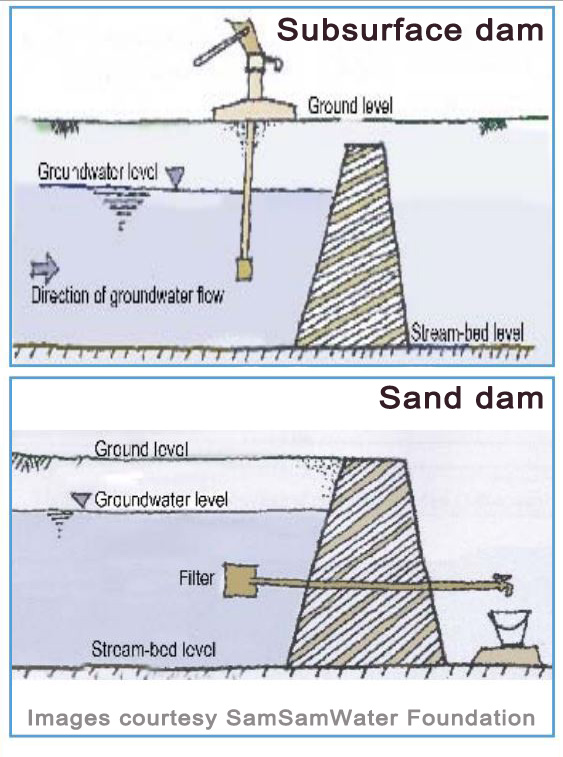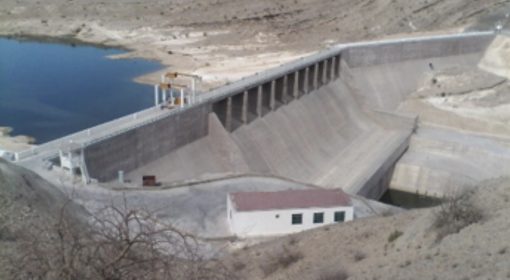Posted by Abraham Abhishek
February 10, 2014

Subsurface dams are groundwater dams. They intercept the natural flow of groundwater and provide storage for water underground.
Sand dams are constructed above the ground, usually on seasonal river beds. They intercept sand and silt carried by the river during periods of high flow, which get deposited in front of the dam. Up to 40% of this deposit could be water stored between the sand particles. This water can be extracted in a number of ways. (Left image courtesy www.samsamwater.org)
In an interview to TheWaterChannel (watch), Erik Nissen-Petersen (ASAL Consultants) highlights limitations of sand dams and the relative advantages of subsurface dams as water harvesting structures for the benefit of rural communities in dry areas. He points out that silt fills up the sand dam reservoirs very quickly, and the height of the spillway has to be increased every time that happens. “Raise the spillway too much, and the river will change its course,” he adds. Thirdly, there is a constant threat of water flowing down the river bed can eroding the foundation of the dam itself. Last, but certainly not the least, sand dams are expensive to construct. Erik has known them to cost up to 40,000 Euros, a very high figure for a solution meant for rural, dryland communities. Moreover, Erik claims that 9 out of 10 sand dams are known to have failed.
On the other hand, subsurface dams do not suffer from these design problems, can be built anywhere and demand much less time and money. And they provide only a little less water than sand dams. “People like sand dams as you can see them and their construction generates employment… the hardware supplier is happy, the engineer is happy… but the farmers are not getting the water they can have.”
In another interview, Simon Maddrell from Excellent Development- an organisation that has championed the use of sand dams in Africa and South Asia- responds to Nissen-Petersen’s reservations against the technology (watch). He says that at the conceptual level, sub-surface dams are in fact sand dams. He argues that sand dams in Kenya take about 4 years to get silted up to their height, as successive rains keep stirring up the deposited silt and wash them over the weir. As for dam foundations getting eroded by river flow and causing rivers to change course, Simon puts it down to bad design that can be avoided simply by taking appropriate precautions.
Further, he claims that only the most expensive sand dams could cost close to 40,000 Euros. The average figure is closer to 10-15,000 Euros, which works out to 10 Euros per beneficiary. And if 9 out of 10 sand dams were actually failing, what explains the large number of farmers building and adopting them?
Simon hastens to add that the issue is not whether it is best to champion sand dams or criticize them. As one moves down the river catchment, the hydrological environment changes along with the needs of the communities. And so does the answer to the question “what is the most appropriate technology here?”
A wealth of information about sand dams, subsurface dams and many other water harvesting technologies/ case studies can be found on www.waterforaridland.com and www.excellentdevelopment.com.
What experiences have you had with sand dams/ subsurface dams? Please share them in the Comments section below.

